The ‘Wet-Dog Shake’ And Other Physics Mysteries
23:47 minutes
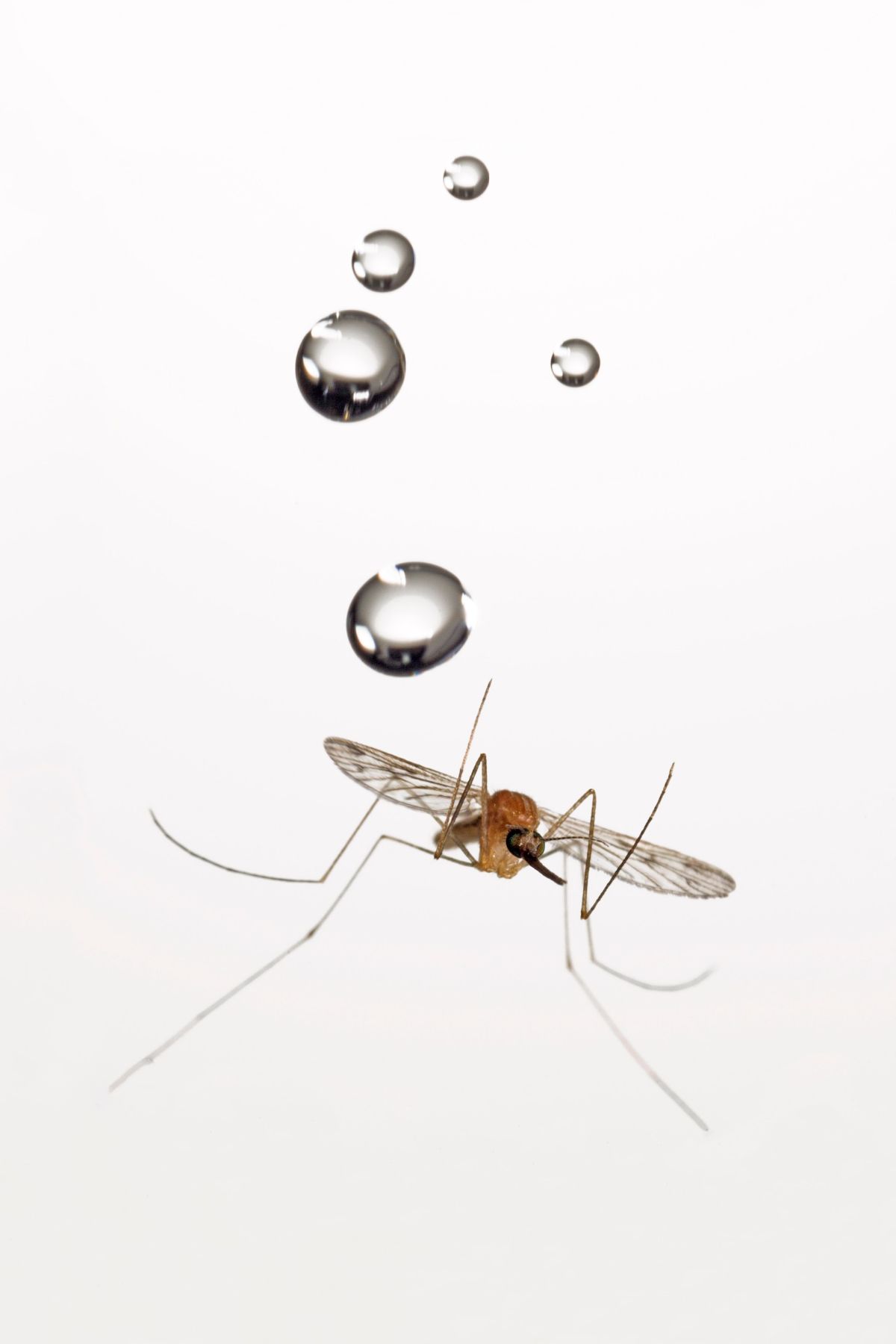
Ever wondered why your dog’s back-and-forth shaking is so effective at getting you soaked? Or how bugs, birds, and lizards can run across water—but we can’t? Or how about why cockroaches are so darn good at navigating in the dark?
Those are just a few of the day-to-day mysteries answered in the new book How to Walk on Water and Climb Up Walls: Animal Movement and the Robots of the Future, by Georgia Tech mathematician David Hu.
The book answers questions you probably won’t realize you even had, but they’re questions with serious answers that span the worlds of physics, fluid mechanics, and biology. Throughout the book, Hu demonstrates the extraordinary value day-to-day curiosity brings to science.
[David Hu investigates the physics of giant pumpkins.]
But, while he explores how science can reveal wonders of the mechanisms in our world, Hu writes how his work has been the target of politicians for so-called “wasteful” science spending. One of the studies under attack, an inquiry into the average length of urination across the animal kingdom, might have had a laughable premise, but eventually led to serious attention by urologists and researchers working on treatments, prostheses, and artificial organs.
“The concept of waste is based on the notion of a limited gas tank and a single known destination,” Hu writes. “People expect scientists to save gas as they go from A to B. But the real power of science is to take us to destinations that we have never been to.”
Read an excerpt of Hu’s new book How to Walk on Water and Climb up Walls. Plus, view more photos and video from Hu’s research below.
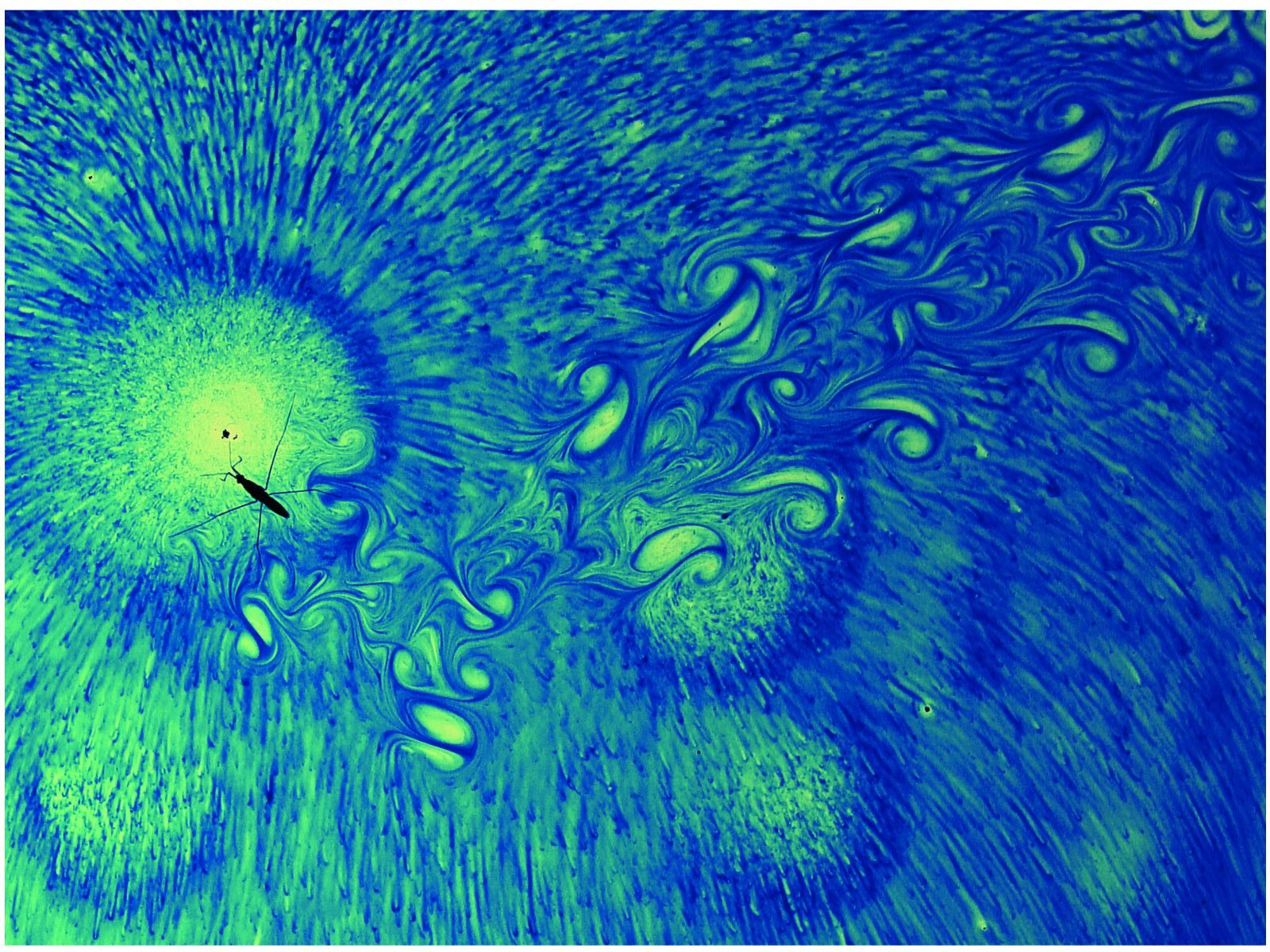

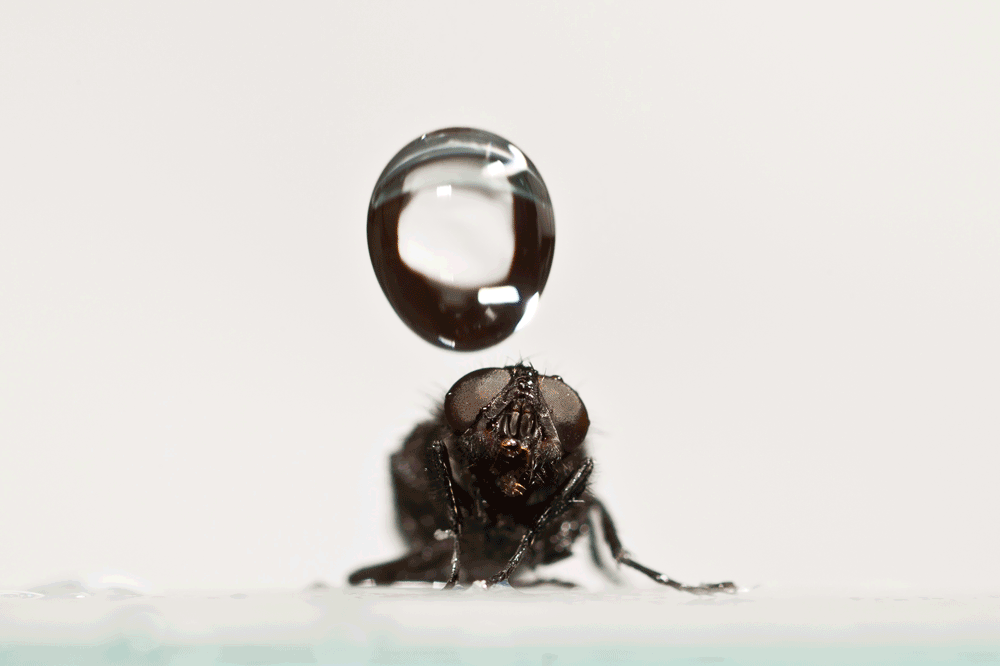
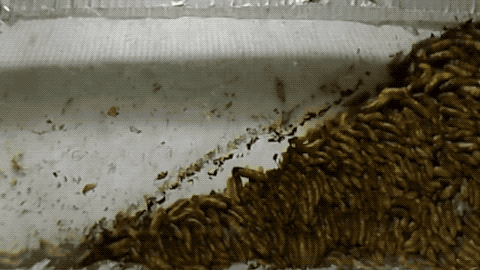
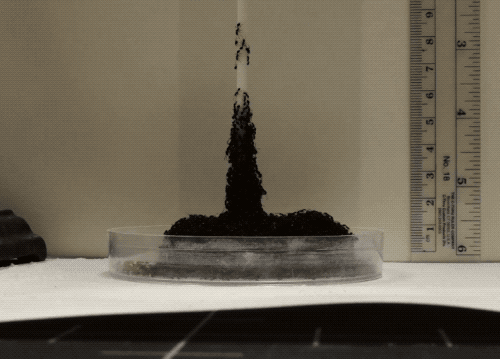
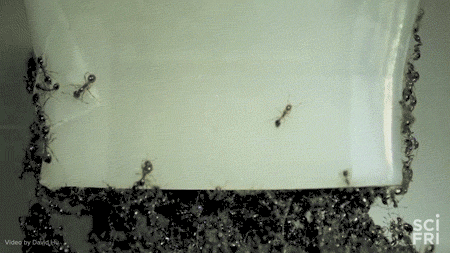
Check out David Hu’s lab website at Georgia Tech to find out more about his research.
David Hu is a mathematician and a professor in the departments of Mechanical Engineering and Biology at Georgia Tech in Atlanta, Georgia.
IRA FLATOW: Next up, you ever wondered why your dog’s back and forth shaking is so effective in getting you soaked? Oh, yeah. How bugs and birds and lizards can run across the water without falling in? Or how cockroaches are so darn good at navigating in the dark. I noticed that many times.
And they’re the kind of questions that leave you scratching your head that you may not have known you wanted to know the answer to until you, you know. But once you pondered them a little more you think, yeah, how is that possible? I’ve thought about this all the time.
Well, we’re all in luck. Because all of these questions and more are answered in my next guest’s book, How to Walk on Water and Climb Up Walls– Animal Movement and the Robots of the Future. David Hu is the author. He’s a mathematician, professor of mechanical engineering, and biology at Georgia Tech in Atlanta. And we have an excerpt up there at ScienceFriday.com/WalkOnWater. Welcome back, David.
DAVID HU: Hi, Ira. It’s great to be back.
IRA FLATOW: Nice to have you back. I want to send out a question to our listeners and ask them if there’s anything in their day-to-day life that might make for a good physics experiment, a mundane question that might have a fascinating answer. We’d like to hear from you. 844-724-8255. 844-SCITALK.
What do you wonder about nature that you want to know about? Then maybe you can do an experiment to figure out how to do that. Because that’s what you do all through– you just wonder about stuff around you, don’t you, David?
DAVID HU: Yeah. The everyday world’s a great window into evolutionary history. You know, all the animals around us, all the people around us, they do the same functions that all animals have done from small all the way up to large. They give us a really good idea of what it’s like to be really small or really big or really hairy.
IRA FLATOW: I’m Ira Flatow. This is Science Friday from WNYC Studios. You investigated something called “the wet dog shake.” And that’s not a dance move I’m talking about. Tell us about that.
DAVID HU: Maybe it is a dance move.
IRA FLATOW: It will be by the end of the hour.
DAVID HU: It’d be a very difficult one. Well, when I first met my wife on our very first date, she brought this poodle that I basically had to learn to get to know and appease the next few years. And it was the first time I’d spent any time around dogs. And I noticed it was really, really good at shaking off water or any stickers I put on it. I mean it was really, really fast, and I’d never seen it before. So I decided to high-speed film it.
And what I saw on the high-speed film just amazed me. I don’t know if you’ve seen a dog shaking off water under slow-mo, but they can generate a huge amount of forces. They generate basically 12 times Earth’s gravity. It’s the same force that a formula F1 race car takes when it takes around a curve. It’s basically the limits of what the human being can take.
There’s this guy named Colonel John Stapp, a scientist who tried to test the limits of human acceleration. And he strapped himself to a rocket sled and then slammed on the brakes. And he found out at about 10 Gs– 10 times Earth’s gravity– your body’s fine but your eyeballs start detaching from the retinas.
And so actually all these animals that are doing this wet dog shake, they’re pushing the envelope of what their bodies can take. They’re closing their eyes shut really tightly just to don’t get their eyeballs sort of detaching.
IRA FLATOW: And it’s amazing how much water they actually get rid of. Isn’t it?
DAVID HU: Yeah. We did these experiments. We weighed all sorts of animals before and after they shook off water, and in a single second, your average dog can remove 90% of its water. For a 60-pound Labrador retriever, that’s about a pound of water. And it removes it all in a second. That’s comparable to what your laundry machines do in about an hour.
IRA FLATOW: That’s amazing. If you’ve stood next to dogs, you understand how much water that is.
DAVID HU: They’re really good at getting the water back on you. Yeah.
IRA FLATOW: [LAUGHTER] Now I know one of your first projects, you studied how water strider bugs– these great bugs. They can walk on water. You see them on lakes all the time– how they can paddle through the water without having oars on their feet. How do they do that?
DAVID HU: Yeah, that’s right. Imagine if you were going for a crew race– a rowboat race– and someone handed you these long just chopsticks and said, go row your boat. And that’s basically what these water striders do. They row without any blades, just with these long, spindly legs.
Each of these legs is about a width of a human hair. And what allows them to work is that they are covered in hair. These water striders– they’re the hairiest animals on earth. I’ve been to some swimming pools, and I think I’ve seen the hairiest things on Earth. But no, it’s these waters striders. They’ve got about 10,000 hairs per square millimeter. And it’s such a corrugated surface that water can’t actually penetrate it.
So when they’re standing on water, they’re actually standing on a cushion of air that’s trapped within their hairs. From beneath, they just look like a pincushion. And because they’re just floating on air, you can blow them, and they just glide like the water’s ice.
IRA FLATOW: Have we been able to mimic that at all?
DAVID HU: Yes. Well, when I was in grad school, we built this machine called robostrider. It’s this device about as big as my hand, weighs a third of a gram, and it’s made with hydrophobic aluminum and steel. And it can actually support its weight on the water surface like the water strider using surface tension. And it rows without getting wet. It treats the water’s surface kind of like a Saran wrap. It just deforms it, kind of massages it. And it’s oars don’t actually break the surface. They just bend it, and it rows across the water.
IRA FLATOW: Man.
DAVID HU: And since then there’s been lots more versions built. They’re imagined to be sort of these cheap devices– maybe fueled by solar cells or fueled by electrolysis of water– that you can spread out in the oceans, and they’ll just take data.
IRA FLATOW: Talking with David Hu, author of How to Walk on Water and Climb Up Walls. We’re going to take a break. Our number 844-724-8255. You can also tweet us @SciFri things that you’d like to talk about how animals do this stuff in the world. And David, he goes out and studies them all. We’ll talk more with him after the break. So stay with us.
This is Science Friday. I’m Ira Flatow talking about the physics phenomena of the animal world, the topic of the great new book, How to Walk on Water and Climb Up Walls with mathematician David Hu of Georgia Tech. And we’re looking for your questions. Anything that tickles your curiosity in your daily life. Something that might be solved by creating an experiment. We’re asking you to phone in 844-724-8255.
And here’s someone who might be thinking like that, Sean in Cincinnati. Hi, Sean. Welcome to Science Friday.
SEAN: Ira Glass. What a hoot.
IRA FLATOW: There you go.
SEAN: I love your show
IRA FLATOW: [CHUCKLES] Go ahead.
SEAN: Well, this has been bothering me for about 25 years that I can’t understand how it is that a fly can land on a ceiling.
IRA FLATOW: Hm. David? How does a fly land on a ceiling? I’ll have Ira Glass get back to you on that one. Well, David, what do you think?
DAVID HU: Well, flies, ants, and a lot of insects, they have a couple ways to basically walk on walls or walk on the underside of ceilings. And a lot of these ways would be difficult for us. But there’s actually new technologies there making it possible. So there are actually people that have built devices that are allowing them to climb on glass buildings like geckos and flies.
So there’s a couple of ways that the flies do it. If you zoom in– imagine zooming in down to that little fly leg– first, they’ve got this little thing called an arolium, a small balloon that pops up every time the fly puts its foot down. And on this balloon is a really thin layer of fluid. It’s kind of like a glue. In fact, if you actually look really closely at your fly– and they’ve done this for ants– you’ll see its footsteps. You’ll see a trail of little drops of goo that it’s left behind.
It’s the surface tension of that goo that allows it to stick. The same force that allows drops to cling to your ceiling or to your car windshield window, that’s the same force that supports the fly weight because it’s so light. So that’s one way that the flies do it.
They also have a series of hairs. They’re the same hairs that the gecko has. There’s an example of what’s called convergent evolution that two species– they don’t look at all alike. One’s way bigger. In fact, one eats the other– they have very hairy feet.
And the gecko’s hairs, for example, aren’t just hairs. They’re like Christmas trees with Christmas trees on the tips of the Christmas trees. They have a series of progressions that get more and more hairy. And it provides this really large surface area that’s really close to your ceiling. That provides a huge what’s called Van der Waals force.
You don’t even feel it. When you pick up things, there’s always a Van der Waals force– intermolecular force– between two objects. It’s what allows pollen to stick to your clothes.
But when you have a really large surface area, it’s enough to actually support the weight of these insects. And these engineers at Stanford have actually built versions of this where they’ve engineered arrays of hairs and made sure that they can hold on to things.
If you remember, there was a big controversy about this. In Colbert Report a while back, people were saying Spider-Man doesn’t exist. Because people had shown that if you try to scale up a spider’s legs, it wouldn’t be able to support the weight of a human. And that’s because when you have a large array of these hairs, they don’t act as good as just one hair multiplied many times. They start to lose their effect because the weight support is not equally applied to all these hairs. There’s some parts that get too much weight, and those hairs peel off.
Well, these engineers have found a way to basically create this little kind of yokes. These things that are in front of cattle. There’s ways to basically equally distribute weight. They applied these things to these hairs and made these handheld plates that allowed a student to actually climb up a glass building like a spider.
IRA FLATOW: Yeah. Our number 844-724-8255. Let’s go to Dave. Dave in Cheyenne, Wyoming has an idea for an experiment. Right, Dave?
DAVE: Yeah, I do. I have always been interested ever since I saw it with the levitating frog in the high intensity magnetic field.
IRA FLATOW: Yes, go ahead.
DAVE: And my experiment is, I wonder if that could be done with human beings.
IRA FLATOW: Levitating a human being in a high intensity magnetic field. What an interesting idea. What do you think, David?
DAVID HU: So that uses this idea called paramagnetism, where organic things– like things made out of water– can actually become like magnets. The big issue was that magnetic field– which was, I think, in Europe– was only big enough for strawberries and a frog. They still haven’t made one that’s strong enough to levitate a person.
So that guy who won it, Andre Geim, he’s a fellow Ig Nobel Prize winner. And he tells me that the frog was fine. So it’s possible a human could do it, too. But they would need a much bigger, much bigger magnet. And that was the most expensive magnet they had, and it was just big enough for a frog or a really tiny human.
IRA FLATOW: Somewhere Galvani is laughing about that experiment.
I want you to recount for us, because you have a great story in your book. You open your book about a story about you as a new father. Let me put it that way. An event that happened to you as a new father and that launched into an investigation of yours. Did I give you enough information?
DAVID HU: Yeah. We can talk a little bit about what it’s like to be urinated on. And so when you’ve changed kid diapers, sometimes they play games. And one of the games they play is, let wait till the diapers off to urinate.
And there was a time that happened, and I was kind of shocked. And one of things I was shocked by was how long it takes little kids to urinate. If any parent that’s waiting for a in the bathroom, you think if you’re smaller everything should be faster. But no, urination takes about the same amount of time. And from my measurements, it was about 21 seconds for about a 10 pound kid. And those are comparable to my own measurements of my own urination time.
And it just struck me. Because if you’re 10 times smaller, you should have 10 times less urine. Urine’s a byproduct of the blood– urea– and the bladder should be 10 times smaller if you’re smaller. So I couldn’t wrap my head around it. And I got a PhD in fluid mechanics, so I couldn’t understand why it takes the same amount of time if you’re smaller.
So I sent some undergraduates– one of them who’s now a professional urologist which I’m super– he just– lifelong learning. He just couldn’t stop. Couldn’t stop it. Couldn’t stop the fun– and they went to the Atlanta Zoo. And I just had them bring the stopwatch and bring this dirty old bucket and this camera and don’t come back until you’ve taken all the animal urination videos and measured all the urination volumes of every animal in the zoo.
And they took me seriously, and they actually did come back in a few weeks. They smelled disgusting spotted in urine, and they told me the very worst was the rhino. They were kind of traumatized by the rhino. I said, just tell me one data point, and then I’ll know everything I need to know. And that’s the elephant. Just tell me how the elephant goes to the bathroom.
And they said, the elephant doesn’t listen to anything they tell it to do. It just wakes up in the morning. But when it does wake up, it takes a long urine. They put this kitchen garbage can– it’s about 20 liters, very large garbage can. Can last for a week– and it fills the entire can. And I said, how long does it take? And they said, well, that bladder is about 100 times as big as your wife’s dog, and it takes about 21 seconds.
I said, that’s the most amazing discovery I’ve ever made. This pretty much is the pinnacle of my career.
IRA FLATOW: [LAUGHING]
DAVID HU: And it turns out it’s because they have this long pipe in their body. So doctors and veterinarians have long known that in the body there’s this thing called the urethra. My kids call it the “pee-pee pipe.” And I have to tell my kids, boys have the pee-pee pipe, and girls have a pee-pee pipe. It’s just in different places. And it actually has the same aspect ratio. The length, width is the same for like mice all the way up to elephants.
And to put it in perspective, when an elephant urinates a female elephant uses a pee-pee pipe that’s about a meter long and about the width of my fist. So if you imagine that pee-pee pipe’s like a highway, you’ve got– we wish we had this Atlanta– we’d have like 20 lanes for the urine to come down.
And moreover, the length of that pipe uses this effect that dates back to the 1850s called Bernoulli’s law, where basically if you’ve got a long pipe underneath a vessel, that pipe can actually amplify the force of gravity and increase the speed of the urine. So much that when an elephant urinates, it’s like five shower heads going on at once.
IRA FLATOW: Wow. You’ve given us more to talk about tonight over a beer than any time in the recent past on Science Friday.
DAVID HU: Yeah. You would get really clean from five shower heads, but not five urine shower heads. That would be less clean.
IRA FLATOW: Yeah. We’ll quote you on that.
While we’re on the topic, while we’re talking about wet things and on the topic of water, there’s a chapter about another question I never knew I had until I read it in your book. And that is, how do mosquitoes fly through the rain? You know? I mean if it’s raining really hard and a tiny little mosquito, why doesn’t it get pummeled and knocked away and smashed by all that water? Well, one would think that with the mass of water, it should be devastating to them. But not so.
DAVID HU: Yeah, it should be devastating. And if you take a picture of a mosquito in a rainstorm, you’ll see this water drop. They’re about the same size, but the mosquito has long, gangly legs. So the water drop actually weighs 50 times as much as a mosquito. It’s like you getting hit with a Volkswagen Beetle. It’s a huge, huge difference in weight.
But that’s the amazing thing about nature, taking advantage of this huge David and Goliath story. And it’s taken advantage of the mosquito’s really light weight. And this how it does it.
Like when you go in a rainstorm, you stick out your hand and a raindrop hits your hand and splashes. And you can feel it. It’s a hard force. And the reason the force is so high is because you’re ricocheting the rain drop. You’re actually throwing it back up in the air. It’s splashing because it’s hitting your hand.
But when raindrops hit mosquitoes, they don’t splash. That’s the thing we discovered in the high speed film. They keep on going. And so if you don’t actually– this is kind of a zen thing– if you don’t slow down the drop, if you don’t resist the drop, you don’t get that much force. Because you’re not exploding the drop, you don’t get that much force.
And the mosquitoes, they just go along for the ride, sort of act as like a stowaway on this drop. They’re so hydrophobic, they’ll eventually split off. But they don’t resist the force, and they just survive that way.
IRA FLATOW: I’m Ira Flatow. This is Science Friday from WNYC Studios. I’m talking with David Hu, author of the new book How to Walk on Water and Climb Up Walls. Let’s see if we can get a phone call in before we have to go. Let’s go to Barb in Seattle. Hi, Barb.
BARB: Hi.
IRA FLATOW: Go ahead.
BARB: So my question, going back to the fly thing that we had earlier, is those annoying little fruit flies, like in your kitchen. They’re little tiny things, and you have a great big hand. And you go to swat them, and they seem to magically transport to someplace else. Why can we not hit those little, bitty things? How do they maneuver so quickly and so agilely that we can’t get them?
IRA FLATOW: Good question. Yeah. David.
DAVID HU: Well, Sally, so that has an evolved response for millions of years. Those flies are tasty little protein, fatty treats. So if an animal could really get them, they would have.
And the way they do it is all preparation. So the fly has excellent vision. They can see what’s called looming objects. So your hand as it’s coming down from far away, it’s increasing in size. And the flies can see that. And even before you’re even close, they see this looming object, and they actually start preparing like inches, a foot before your hand is even close.
And what they do is they actually– Michael Dickinson filmed this at Caltech– they move their middle legs– they’ve got six legs– they move it in response. So they feel the direction of this looming object, and they move their legs in response so they’re ready to jump in the opposite direction as soon as possible. And they do all this without the brain. It’s basically all sort of autonomous. It’s just an instinct for them.
So just from this looming response, they know what direction it’s coming from. And by the time your hand has even gotten close, they’ve prepared to take this catapult-like leap. And they just basically leap in the opposite direction before you even touch them.
IRA FLATOW: Before we go, I want to touch on a serious turn that your book takes at the end when you talk about how your research has been targeted by politicians for being so-called “wasteful science.” Tell us about that.
DAVID HU: That’s right. About two years ago, my university told me to turn on the TV show, Fox and Friends. And there’s this huge game show wheel where they put all the names of these scientific studies. And I found out that I was on this list of the most wasteful scientists for the entire country. And not only that, but I was on the list three times, which made me responsible for 15% of the entire country. Which I was kind of proud of, because I’m just one person. I thought, that’s pretty good this year. Let see if I can go for 30% next year.
But basically they were saying that– and they don’t just target me. They’ve targeted a lot of people who study animal movement. Sheila Patek’s fight club for shrimp. Basically people are studying how shrimp can use their fist to break open mollusks. Treadmills for shrimp. People that are basically studying animals and how they move, we’re sort of easy prey for these attacks against science.
IRA FLATOW: You write that the concept of waste is based on the notion of a limited gas tank and a single known destination. People expect scientists to save gas as they go from A to B. But the real power of science is to take us to destinations that we have never been to.
DAVID HU: That’s right.
IRA FLATOW: It’s hard for people who are not involved in science to know about that failure is an option in science. Making mistakes and failing is something you really welcome as opposed to other places in life.
DAVID HU: Yeah. For example, the people who have been calling how, do bugs escape a fly swatter? These animals are doing things that our machines are still not capable of doing. And this is important because we’re hoping that our robots– these days robots are trapped in factory floors. They’re doing repetitive tasks– we are hoping they can actually face the great outdoors, places where there’s leaves and wind and water.
And to do that, they’re going to have to become a lot more animal-like. They’re going to have to learn to deal with different terrains– sand, water, rainstorms. And the only way we can understand how to design those kind of things is to look at the things around us how they’re doing it for most of our first step.
IRA FLATOW: Yeah. And you do a very good job of that in your book, How to Walk on Water and Climb Up Walls– Animal Movement and the Robots of the Future. Thank you. David. It’s a great read.
DAVID HU: Thanks.
IRA FLATOW: Thanks for joining us. David Hu is a professor of mechanical engineering and biology at Georgia Tech in Atlanta. And we have an excerpt up on our website at ScienceFriday.com/WalkOnWater.
BJ Leiderman composed our theme music. And, of course, you can listen to our program. Any way you like to listen to podcasts, we’re there. And you can also ask your smart speaker to play Science Friday whenever you want. So every day now is Science Friday. Have a great weekend. I’m Ira Flatow. Get out there and vote in New York.
Copyright © 2018 Science Friday Initiative. All rights reserved. Science Friday transcripts are produced on a tight deadline by 3Play Media. Fidelity to the original aired/published audio or video file might vary, and text might be updated or amended in the future. For the authoritative record of Science Friday’s programming, please visit the original aired/published recording. For terms of use and more information, visit our policies pages at http://www.sciencefriday.com/about/policies/
Christopher Intagliata was Science Friday’s senior producer. He once served as a prop in an optical illusion and speaks passable Ira Flatowese.